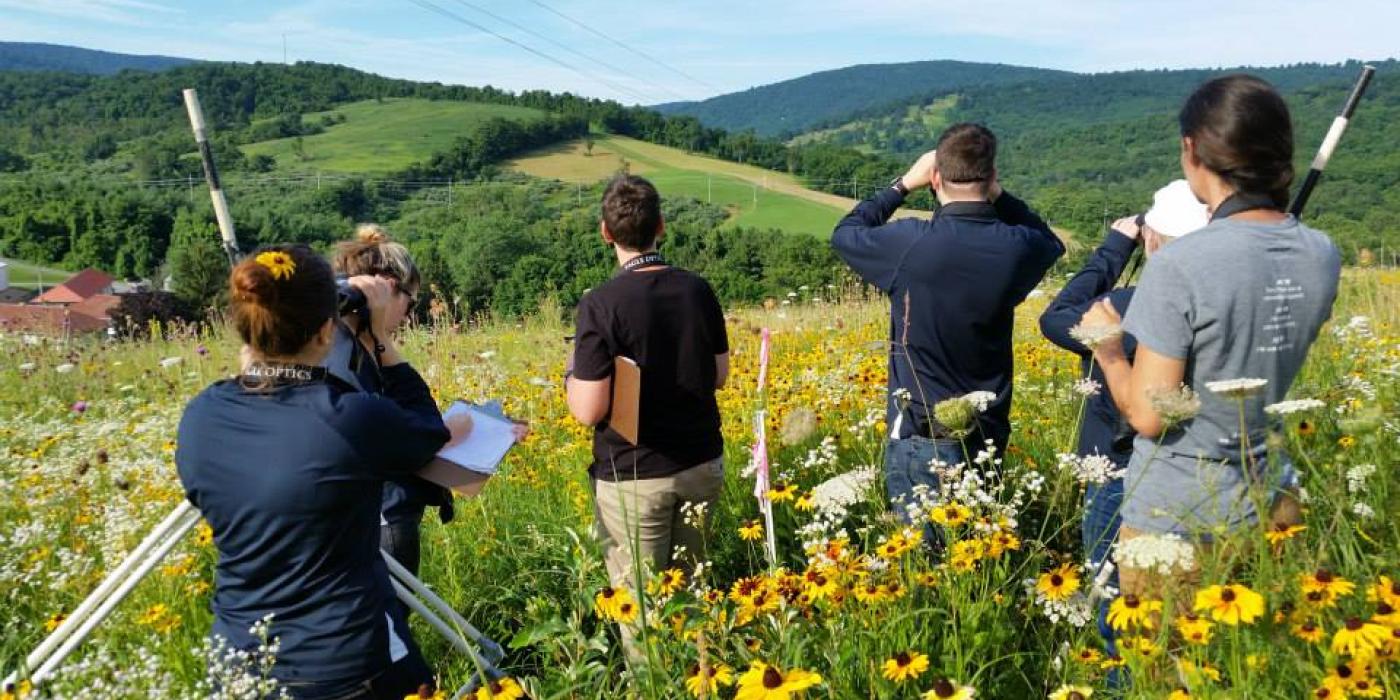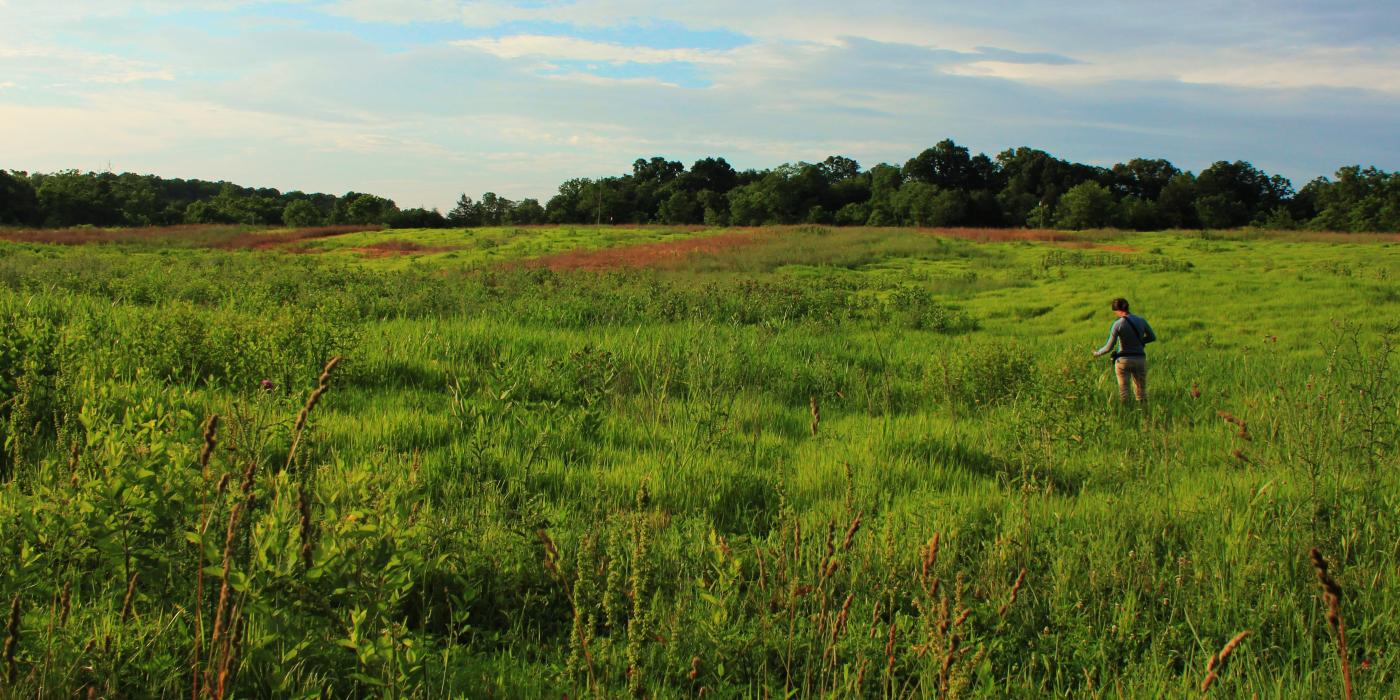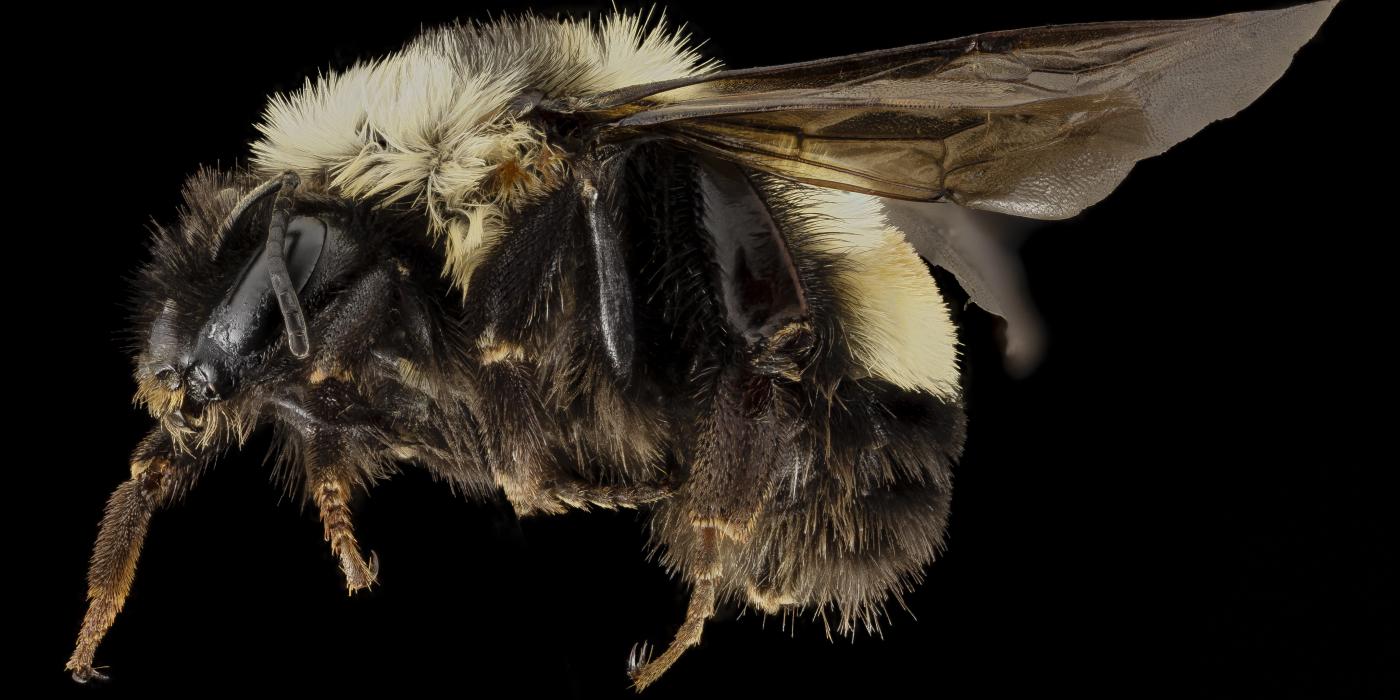The Zoo in Your Backyard
When the Shenandoah Valley and Northern Piedmont grasslands thaw from winter’s frost and transform with spring’s arrival, Smithsonian Conservation Biology Institute (SCBI) researchers and citizen scientists travel the region in pursuit of pollinators and other wildlife. As part of the Virginia Working Landscapes (VWL) program, they are trying to get to the bottom of why some species that make their homes in grassland habitats flourish, while others are disappearing.
The researchers’ journey to find grassland plants, birds and bees spans 15 counties on both sides of the Shenandoah National Park. When they arrive at their destinations (80-plus private and public properties), they are greeted by landowners eager to help.
“Our program started six years ago as a grass roots push from the local community,” says Charlotte Lorick, outreach coordinator for Virginia Working Landscapes. “Many of the landowners want to work with SCBI to find ways to improve and develop best practices for managing their pastures and hayfields while being good wildlife stewards.”
To begin their biodiversity surveys, the researchers pick a point in each field they survey. They identify the birds, plants and pollinators they see and hear using the same protocols for each site. There are particular species they like to see, like eastern meadowlarks, northern bobwhite quails, bumble bees and sweat bees, because they are significant to the region or their populations are in decline.
One of their most exciting finds was a rusty patched bumble bee in 2014—a species that has declined from an estimated 87 percent of its range and hadn’t been seen in the eastern United States in five years. On Jan. 10, 2017, the species was downgraded to ‘endangered’ status by the U.S. Fish and Wildlife Service. It is the first bee in the continental U.S. to be listed under the Endangered Species Act.
Finding the rusty patched bumble bee led VWL researchers and partners to develop a study of common and declining bumble bee species in the region. In 2015, the team set out with nets to catch bumble bees. Once a bee was caught, the van transformed into a mobile science lab where the team took DNA and fecal samples. After releasing the bees, they brought the samples to the State Arboretum of Virginia for lab analysis. These DNA samples help scientists find and research Nosema bombi, a microsporidian parasite and one suspected cause of North America’s bumble bee decline.
“We want to continue to study and protect wildlife in this area,” says Lorick. “Our survey results are a great tool that helps landowners set unique goals for preserving biodiversity. One of our participants uses rotational grazing methods with his sheep and cattle, restoring pasture that had been overgrazed and improving the health of the land. Some landowners manage hayfields, while others have established native meadows to create habitat for birding or hunting. It is a privilege to work with citizen scientists and landowners, learn from their experiences and watch them turn conservation goals into action.”
How can people who live in the city or suburbs help the biodiversity in their own backyard? Just placing a native flowering plant on a porch, in a yard, or on a balcony can benefit pollinators.
“Anyone can help protect pollinators, no matter how large or small your garden,” says Lorick. “Every effort makes a difference.”
Congratulations to two of Virginia Working Landscapes’ participants who recently received awards for their conservation efforts! Bill Tidball of Madison County received the Wildlife Conservationist of the Year Award for conserving quail habitat, and Bill Fannon of Culpeper received the all-around Conservationist of the Year Award for being a habitat advocate. Interested in learning more about Virginia Working Landscapes or how to participate? See the website for details.



